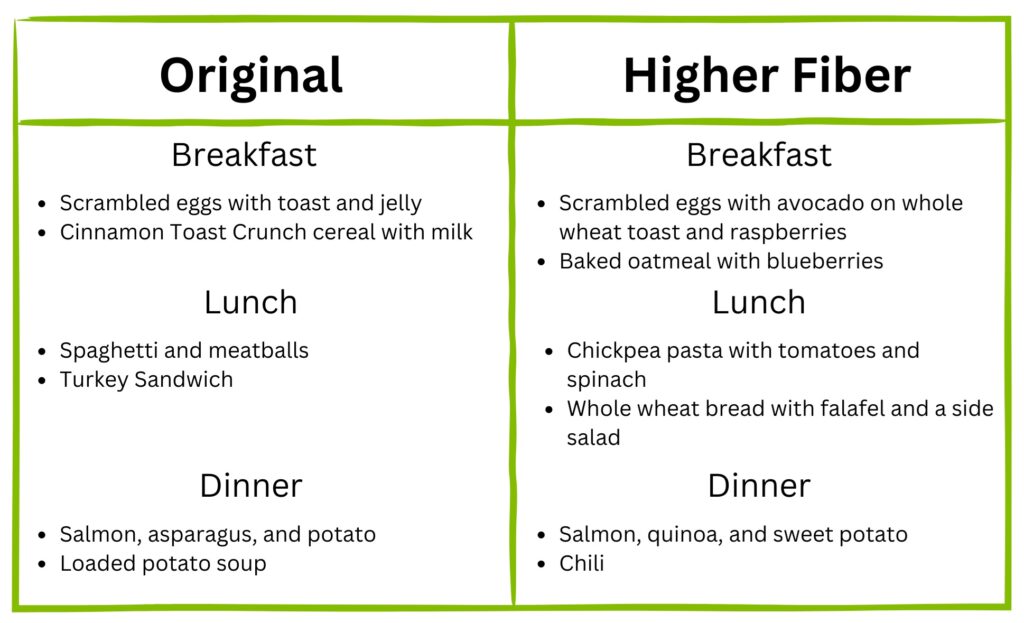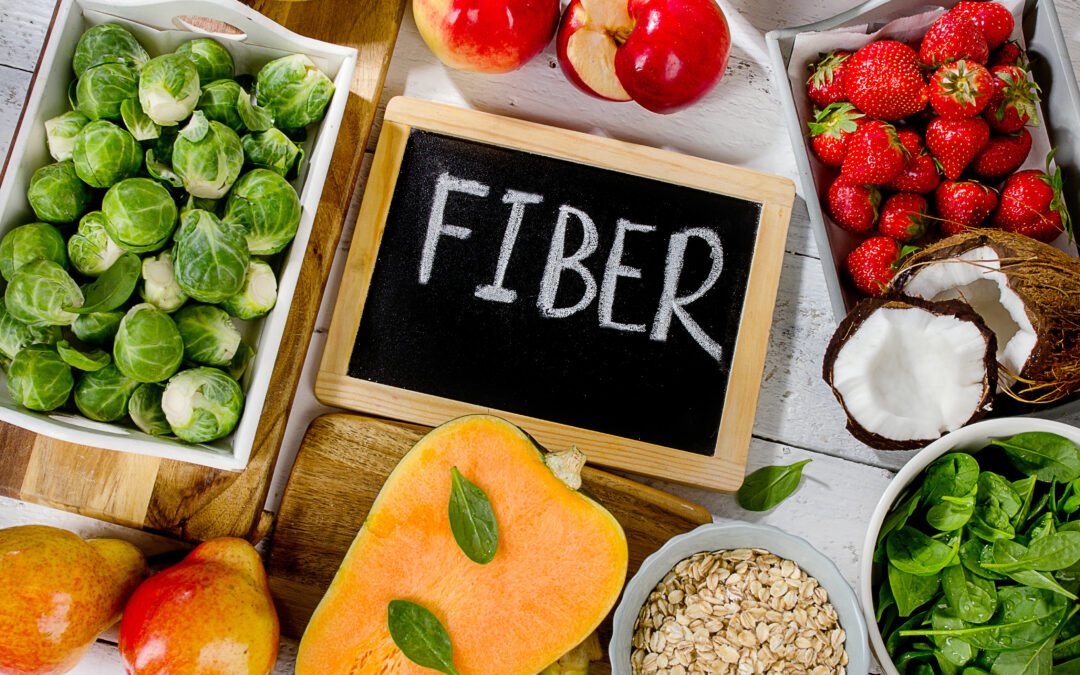“I don’t need to worry about fiber. That’s only important for old people!”
No matter your age, fiber-rich foods are key to your overall health. Yet, most of us only get half the fiber we need each day. As dietitians, fiber is one of THE most important nutrients we look for in our client’s diets. Why? It’s essential for reducing the risk of developing various chronic diseases like heart disease and diabetes and is crucial to normal digestion.
Most of us only get half the fiber we need each day, and this is true for ALL age groups!
If you struggle with any of these common health issues, fiber can help!
- Constipation
- Constant hunger
- Erratic blood sugars
- High cholesterol and triglycerides
- Gut health issues
- Immunity
What is fiber?
Fiber is indigestible carbohydrate that comes from the cell walls of plants. Because of this, it is generally found in whole plant-based foods. Since our bodies don’t have the machinery to break it down, it stays in our digestive tract longer than other nutrients, working its magic. By magic, we mean serving as fuel for the bacteria in your gut and producing byproducts that support your health. It also soaks up water helping to aid in bowel regularity (a.k.a. pooping on a regular schedule!).
Soluble vs. Insoluble
There are 2 types of fiber: soluble and insoluble.
Soluble Fiber
Foods rich in soluble fiber include:
- Legumes (beans, lentils, peas)
- Cereals (oats, barley)
- Fruits and Vegetables (apples, avocados, carrots, sweet potatoes, Brussels sprouts)
- Seeds (flax, chia)
This type of fiber absorbs water and becomes a gel during digestion. If you’ve ever taken a Metamucil supplement, you may have noticed that as water is added, it turns into a gel. Once converted to a gel-like consistency in the body, soluble fibers slow digestion and increase nutrient absorption from the stomach.
Insoluble Fiber
Foods rich in insoluble fiber include:
- Nuts (almonds, walnuts)
- Leafy greens (kale, spinach)
- Starchy vegetables (potatoes, corn)
- Green beans
- Wheat bran
- Whole wheat flour
This type of fiber does not change through digestion. It simply speeds up the passage of food through the digestive system
and adds bulk to your stool supporting regularity.
Prebiotic Fiber
Prebiotics are like filet mignon to your bacteria. This preferred fuel by your bacteria is metabolized and converted into short-chain fatty acids that help support leaky gut or intestinal permeability.
These prebiotic fibers are found in the same foods that contain soluble fiber. But they can also be found in:
- Green bananas
- Artichokes
- Garlic
- Onions
While it’s beneficial to take a food-first approach, supplements can help you meet your prebiotic needs if you don’t eat many prebiotic foods.
How much do I need to reap the health benefits?
It’s recommended that everyone include 25-38 grams of fiber per day. Another way to think about this is that for every 1,000 calories you eat, you should aim for 14-20 grams. This is a total amount, so try to get some of each type in there. Check out this guide to help!
As you increase fiber in your diet, do it gradually and pair it with plenty of water. If you increase your intake too fast, it can have negative side-effects like bloating, nausea, or constipation. Just like a sponge, fiber needs water to plump up and pass stool more smoothly.
Add more fiber to your diet by making simple switches. Here are some examples:


